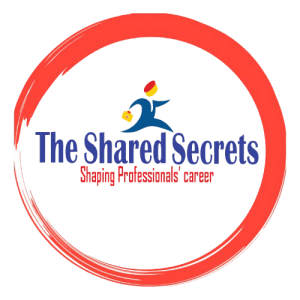Finding your dream job often starts with crafting the perfect resume. Your resume is your first chance to impress potential employers and can determine whether you land an interview. To help you stand out, we’re diving deep into 10 proven resume writing tips that work. Whether you’re writing your resume from scratch or refining an existing one, these tips will guide you in creating a professional resume that gets noticed.
The Importance of a Professional Resume
A professional resume is more than just a list of your past jobs—it’s a reflection of your career journey and what you bring to the table. Your resume can set the tone for the entire job application process, influencing how employers perceive you right from the start. A polished, well-organized resume signals to hiring managers that you’re serious about your job search and capable of delivering high-quality work.
Understanding the Role of Resume Writing Services
Creating a standout resume can be challenging, especially if you’re unsure where to begin. This is where professional resume writing services come in. These services can be a game-changer, providing you with a resume coach who helps tailor your resume to highlight your strengths and align with industry standards.
For instance, if you’re transitioning to a new field, a resume coach can help reframe your past experiences to match the new industry’s requirements. By hiring a professional, you ensure your resume is not just well-written but strategically crafted to meet the expectations of employers and pass through ATS (Applicant Tracking Systems).
The Essential Resume Format
Selecting the right resume format is critical in presenting your qualifications effectively. Here’s a closer look at the three main types:
- Chronological Resume: Ideal for individuals with a solid work history in the same field. This format lists your experiences in reverse chronological order, making it easy for employers to see your career progression.
Example: A marketing professional with 10 years of experience might use this format to highlight roles like Marketing Manager, Senior Marketing Coordinator, and Marketing Specialist in descending order.
- Functional Resume: Focuses on skills and experiences rather than job titles. This is particularly useful for those with gaps in employment or those changing careers.
Example: A software engineer transitioning to a project management role might emphasize skills like leadership, project planning, and team coordination rather than listing unrelated technical positions.
- Combination Resume: Merges the strengths of both chronological and functional formats. This format is best for showcasing both your skills and your career trajectory.
Example: A sales executive moving into a business development role might use this format to highlight key skills like negotiation, client management, and strategic planning while also listing relevant positions held in the past.
Tailoring Your Resume for ATS
Applicant Tracking Systems (ATS) are used by many companies to filter resumes. An ATS resume is essential because it ensures your application isn’t discarded before a human even sees it. To create an ATS-friendly resume, follow these tips:
- Use standard section headings like “Work Experience,” “Skills,” and “Education” to ensure the ATS correctly categorizes your information.
- Avoid using images, charts, or unusual fonts, as these can confuse the system.
- Incorporate keywords directly from the job posting, especially in the skills and experience sections.
For example, if a job description mentions “project management” and “agile methodology,” ensure those terms are included in your resume, ideally within the context of your experience.
Highlighting Your Achievements with Impact
Your achievements should be the stars of your resume. Use the STAR method (Situation, Task, Action, Result) to frame your accomplishments:
- Situation: Describe the context within which you performed a task or faced a challenge.
- Task: Explain the task you were responsible for.
- Action: Detail the actions you took to address the task or challenge.
- Result: Highlight the positive outcome of your actions.
Example: Instead of writing “Improved sales,” you could say, “Increased sales by 30% within six months by implementing a new client management system.”
This level of detail not only makes your resume more compelling but also demonstrates the tangible impact you’ve had in previous roles.
Avoiding Common Resume Mistakes
Mistakes can quickly undermine an otherwise strong resume. Here are some additional common resume mistakes to avoid:
- Overusing buzzwords like “team player,” “hardworking,” or “results-oriented.” Instead, show how you’ve demonstrated these qualities through specific examples.
- Using an unprofessional email address. Stick to a simple, professional email, ideally with your name (e.g., johndoe@gmail.com).
- Including outdated information like your high school education (if you have a college degree) or irrelevant jobs from more than 10 years ago.
Crafting a Compelling Summary or Objective Statement
The summary or objective section is your first chance to capture a hiring manager’s attention. Here are some examples of each:
- Resume Professional Summary Example: “Results-driven marketing professional with over 8 years of experience in digital marketing, specializing in SEO, content marketing, and social media strategy. Proven track record of driving brand growth and engagement.”
- Resume Objective Example: “Recent graduate with a degree in Computer Science, seeking a software development role where I can apply my programming skills and continue to learn in a dynamic environment.”
Both examples are concise and tailored to the candidate’s strengths and the role they’re targeting.
Importance of Keywords in Resume Writing
Keywords are crucial in both getting past ATS filters and resonating with human readers. To effectively use keywords:
- Scan multiple job descriptions for your target role and note the common terms used.
- Incorporate these keywords naturally into your resume, particularly in the skills, experience, and summary sections.
For instance, if you’re applying for a project management position, common keywords might include “project management,” “stakeholder communication,” and “agile.” Use these terms where relevant, but avoid keyword stuffing, which can make your resume seem artificial.
Keeping It Concise and Relevant
A concise resume is more likely to hold a hiring manager’s attention. Here’s how to keep it focused:
- Limit your resume to one or two pages. If you have extensive experience, focus on the last 10–15 years and your most relevant roles.
- Use bullet points to present your achievements and responsibilities clearly.
- Cut down on jargon unless it’s industry-specific and necessary for the role.
For example, instead of listing every job duty, highlight 3-5 key achievements or responsibilities that align with the job you’re applying for.
Design and Layout: Aesthetics Matter
Your resume’s design should enhance, not overshadow, your content. Here are additional tips:
- Stick to a consistent color scheme. If you choose to use color, make sure it’s subtle and professional, like navy blue or dark gray.
- Use a clear hierarchy with headers, sub-headers, and bullet points to guide the reader’s eye through your resume.
- Include plenty of white space to avoid overwhelming the reader and to make the resume more readable.
A visually appealing resume that’s also easy to read can make a strong first impression.
The Role of Cover Letters in Job Applications
A well-written cover letter can elevate your job application. Use your cover letter to:
- Explain your interest in the specific role and company.
- Highlight how your skills and experiences align with the job requirements.
- Showcase your personality and enthusiasm for the position.
For example, start your cover letter with a strong opening line like, “With a decade of experience in financial analysis, I am excited about the opportunity to contribute to XYZ Corporation’s growth.”
Utilizing Resume Writing Resources
There are numerous tools and resources available to help you with resume writing:
- Online platforms like LinkedIn offer free resume samples and advice from professionals in your industry.
- Resume-building tools like Canva and Resume.io allow you to create polished resumes using templates that follow best design practices.
- Blogs and websites dedicated to career advice, such as Glassdoor and The Muse, provide ongoing tips and updates on resume trends.
These resources can help you stay current with the latest resume writing trends and ensure your resume remains competitive.
The Value of Continuous Improvement
A resume isn’t something you create once and forget about. Here’s why continuous improvement is crucial:
- Update your resume regularly to reflect new skills, experiences, or accomplishments.
- Seek feedback from peers, mentors, or a professional resume coach to identify areas for improvement.
- Stay informed about industry trends and adjust your resume accordingly.
For instance, as industries increasingly value digital literacy, you might want to highlight any new software or tools you’ve mastered since your last update.
Conclusion
Your resume is your gateway to landing your dream job, and these resume writing tips are designed to help you create a document that showcases your qualifications and gets you noticed. Whether you’re just starting out or looking to make a career change, these strategies will help you build a professional resume that not only passes ATS filters but also resonates with hiring managers. Take the time to craft a resume that truly reflects your abilities, and you’ll be one step closer to securing that ideal role.
FAQs
- What is the best resume format for a job application?
The best resume format depends on your work history and career goals. A combination format is often the most effective for showcasing both skills and experience.
- How can I optimize my resume for an ATS?
To optimize your resume for ATS, use standard headings, incorporate relevant keywords from the job description, and avoid complex formatting.
- Are professional resume writing services worth it?
Yes, particularly if you’re struggling to create a resume that stands out. A professional resume coach can help tailor your resume to the specific needs of your industry.
- What common resume mistakes should I avoid?
Avoid using generic templates, including irrelevant information and making grammatical errors. Tailoring your resume to each job application is key to avoiding common mistakes.
- How often should I update my resume?
Regular updates are essential. Ideally, review and update your resume every few months or whenever you gain new experience or skills.

